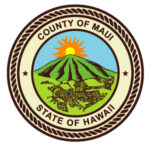 In 1790, Capt. John Kendrick of Boston set out to trade Pacific Northwest seal and otter fur in China. He stopped in Hawai’i to replenish his ship with wood, water and salt. Sailing offshore he smelled a familiar odor emanating from a cooking fire. It was sandalwood, so revered and precious in Asia, and a commodity that was escalating in world prices.
In 1790, Capt. John Kendrick of Boston set out to trade Pacific Northwest seal and otter fur in China. He stopped in Hawai’i to replenish his ship with wood, water and salt. Sailing offshore he smelled a familiar odor emanating from a cooking fire. It was sandalwood, so revered and precious in Asia, and a commodity that was escalating in world prices.
Hawaiians called it ‘iliahi. It was sandalwood that introduced Hawaiians to the concept of credit. Foreign merchants used items such as military uniforms, liquor, guns, silks, leather, silver mirrors, and brass cannon, to barter for sandalwood.
In 1805, after unifying the Hawaiian Islands, King Kamehameha I began to trade with foreign countries. To participate in the lucrative sandalwood trade he purchased a brig, the Ka’ahumanu, and in 1817, with Capt. Alexander Adams, sailed to China. Because of China’s brokerage charges and port fees, he failed to make a profit. But having learned from that experience, he imposed an anchorage fee of 80 Spanish dollars for every ship sailing into Hawai’i harbors. When he died in 1819, the monopoly on ‘iliahi took a downward plunge.
 By 1821 credit debt extended on promised sandalwood reached a stunning $300,000. The common people were displaced from their agricultural and fishing duties, and all labor was diverted to harvesting sandalwood. In 1826, to reduce the staggering promissory note debt, the Kingdom of Hawai’i enacted a sandalwood tax.
By 1821 credit debt extended on promised sandalwood reached a stunning $300,000. The common people were displaced from their agricultural and fishing duties, and all labor was diverted to harvesting sandalwood. In 1826, to reduce the staggering promissory note debt, the Kingdom of Hawai’i enacted a sandalwood tax.
Every man was ordered to deliver to the government a half picul of ‘iliahi, (a “picul” was 133.3 pounds of ‘iliahi heartwood, at $8 to $10 dollars per picul) or pay four Spanish dollars. Every woman older than 13 was obligated to make a 12-by-6-foot kapa cloth for trade. The Kingdom of Hawaii continued selling sandalwood until the mid 1840s. This period saw two major famines and ‘iliahi was harvested to the point of commercial extinction in Hawai’i forests.
Organizations involved in education, conservation, protection and restoration of native Hawaiian endemic and indigenous plants and eco-systems can be found by visiting the Directory of Resources at http://www.iliahi.org/
Question Of The Week:
What else has been harvested into extinction?
Leave a comment here or post it on the Focus Maui Nui Facebook Page. Mahalo!
